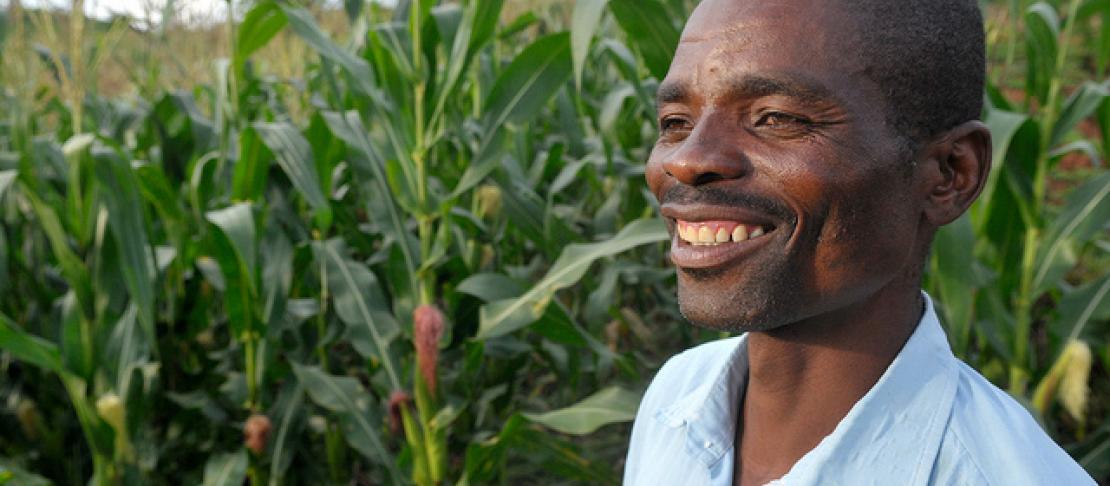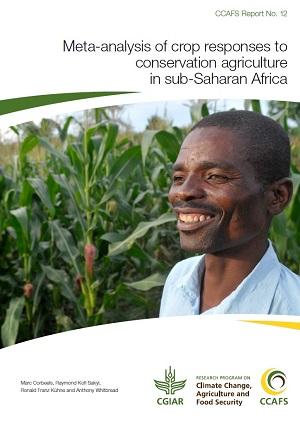Does conservation agriculture work for smallholder farmers in Africa? New report highlights key points for action

Conservation agriculture can improve some farmers' livelihoods and resilience, but it may not work for all smallholder farmers in Africa.
As year 2015 has been earmarked as the International Year of Soils to highlight the urgent need for better soil management, many are promoting conservation agriculture (CA) as a key solution for African farmers. Yet, a slow adoption in sub Saharan Africa raises questions on the effectiveness of CA and the true value of such cropping practices for smallholder farmers. A new CCAFS report, based on collaboration with IFAD and CIRAD, gives some answers.
 Will CA help respond to the urgent need to preserve our soils?
Will CA help respond to the urgent need to preserve our soils?
Out of over 930 million people living in sub Saharan Africa (SSA), about two thirds depend on rain fed smallholder agriculture for their livelihoods. Fragile soils, growing aridity and unsustainable practices like overgrazing, soil-depleting crop cultivation and firewood collection are rampantly degrading over two thirds of African land [UN Economic Commission for Africa]. Fighting this land degradation has recently yet again been listed in the development priorities by representatives of the Least Developed Countries in Cotonou. In SSA countries like Uganda, research shows that better land management practices are linked to reduced rural poverty.
Conservation agriculture (CA), which was initially developed as a response to the US Dust Bowl in the 1930s, is one of the approaches increasingly promoted on smallholder farms in sub-Saharan Africa (SSA) to tackle this land degradation and improve soil health. Proof of its popularity, the First African Congress on CA took place in March in Zambia, where CA is already practiced on more than 5% of cultivated lands.
CA combines three cropping practices to help reduce erosion and water run-off, increase soil fertility and ultimately the crop yields. These consist of minimum or no-tillage to reduce soil disturbance; permanent soil cover, using crop residues as mulch; and crop rotations or intercropping, especially with nitrogen-fixing legumes.
Many experiments across the globe have shown the very positive impact CA can have on crop yields and livelihoods. In the Kulunda Steppe in Siberia, where half of the 42 million hectares of cropland are degraded, farmers were suffering from decades of declining yields. Scientists in this region began experimenting with CA three years ago and have already seen yields rise by around 20 to 25%. These encouraging results suggest CA could offer a relatively inexpensive solution to prevent the next Dust Bowl in the Russian Steppes.
But, to what extent could small farmers in SSA benefit from CA, and in which conditions? To help set the story straight, a CCAFS report has just been published following the analysis of 41 studies identified as comparing CA with conventional tillage based practices in various agro-ecologies and climate conditions of SSA. This meta-analysis of existing data helps us better understand what conditions result in positive crop responses to CA practices as well as identify the factors that limit the adoption and impact of CA and potential solutions to address these.
Yes, CA can bring long term benefits for farmers if all three components are practiced
A key finding was that by combining no tillage with mulching, a farmer will yield on average 300 kg more per hectare in the first three years and even more thereafter, compared to conventional practices. However harvests will be lower in the long run if he practices only no tillage without soil cover and crop rotation.
Another finding is the importance of the use of fertilizer as a condition of success for CA farmers. Farmers yielded about 400 kg more per hectare through practicing CA when nitrogen fertilizer application was higher than 100kg per hectare. Given that the majority of SSA farmers apply much less fertilizer, on average around 8kg per hectare, this calls for the appropriate use of small quantities of fertilizer such as fertilizer microdosing, to benefit fully from CA’s potential.
CA could improve farmer livelihoods and resilience
Scientists attribute the positive yield impact (up to 300 kg more per hectare) of the combination of no-tillage, mulch and crop rotation to several benefits of crop rotation such as better soil structure, less pests and the biological nitrogen fixation which occurs when legumes are used as a rotational crop.
The impact of CA will vary depending on seasonal rainfall. Overall, the meta-analysis shows greater yield gains in rainfall above 1,000mm than in drier conditions. However, some studies claim the opposite as heavy rains on mulched soils often induce aeration problems and waterlogging.
CA has been praised as a good climate change mitigation and adaptation technique. In particular, it has beenpromoted as a technology to cope with more erratic rainfall, due to the effects mulching seems to have on soil-water-balance. But this may be overstated.
“The results of this study do not show clear evidence of this potential,” said Marc Corbeels, a researcher at CIRAD (French Agricultural Research Centre for International Development) who led the study. “On average, yield benefits from CA were relatively low under dry climates in SSA: 140 kg per hectare,” he explained.
Long-term experiments on no till have shown that up to 10 tons of additional carbon could be sequestered in soil. However a recent CIMMYT study of the carbon sequestration potential of no tillage practices concludes that its impact on mitigation has been overstated.
Still, CA advocates crop rotation as well as no tillage and the positive impact of crop rotation in climate change adaptation is widely accepted. Many long-term field studies have directly compared continuous maize cultivation with a legume based rotation. A replicated controlled experiment in Canada found legume based rotation provided an additional 20 tons of soil organic carbon per hectare after 35 years. Rotation with legumes also adds organic nitrogen to the soil and breaks the lifecycle of pest and diseases, reducing the need for “carbon costly” chemical fertilizer, pesticides and herbicides, further contributing to climate change mitigation
Another CA benefit of promoting legumes in crop rotation or intercropping is nutrition. Research in Malawi found that families intercropping pigeonpea in their maize fields were more likely to get enough calories even during dry years than families practicing maize monoculture.
But CA may not fit for all: understanding adoption constraints
Despite its success in some regions, CA is not being widely adopted in SSA. Among the adoption issues identified is that the use of crop residues as mulch/soil cover competes directly with other very important uses such as fodder to feed animals in mixed crop-livestock farms. Poor families also often use maize, sorghum or millet stalks as cooking fuel.
"It is important that the study highlights adoption constraints like these so we can identify potential solutions to ensure CA is being practiced where it is most suitable for the smallholder farmer," adds Stephen Twomlow, a Climate and Environmental Specialist from the International Fund for Agricultural Development (IFAD) which helped fund the study.
The greater benefit may vary depending on the farm. A crop residues trade-off analysis in West Africa found that while some farmers may get better returns by using crop residues for fodder, others benefit more from its use for mulching and nutrient recycling.
Some agronomists point out that CA may not suit all soils. The analysis suggests that CA works better on loamy soils compared to sandy and clay soils. Poorly drained soils are in general inappropriate as mulch can cause waterlogging and crop diseases.
Despite crop rotation benefits, farmers resist introducing legume rotation in continuous crop monocropping (eg maize monoculture in Malawi) due to the lack of legume markets for sales. Unless there is a ready market for the grain, smallholder farmers in SSA tend to grow grain legumes on a small proportion of their farm land, just for subsistence, and certainly not enough to provide a rotation across the farm. This highlights the need for policies, infrastructure and new markets to encourage better adoption of legume rotation practices. A successful example of this is in Ethiopia where policies supporting better seed access, training and markets have led farmers to dramatically increase chickpea cultivation alongside teff.
Sustainable farming practices like CA has a crucial role to play in SSA, where there will be 1.5 billion mouths to feed by 2050, in a drier and more fragile environment with increasingly scarce resources. Providing tailored advice for each region is key and despite evident benefits in many situations, CA may not be the solution for all.
Download the report
Meta-analysis of crop responses to conservation agriculture in sub-Saharan Africa by Marc Corbeels (CIRAD), Raymond Kofi Sakyi (Georg-August-Universität), Ronald Franz Kühne (Georg-August-Universität) and Anthony Whitbread (Georg-August-Universität).
The research was undertaken with funding from the International Fund for Agricultural Development (IFAD).



